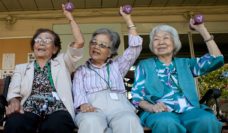In 2002, six percent of adults in the United States practiced yoga, tai chi, or qigong (YTQ). By 2017, that number more than doubled to 15%. This increase occurred across gender, age, race, region, education, and income level. The increase also held regardless of individuals’ other physical activity.
Most individuals practice the movement and breathing therapies of yoga, tai chi, or qigong to maintain overall wellness. Mind-body therapies such as these are also used to address arthritis, and other painful conditions, as well as mental health problems. A number of studies suggest regular YTQ practice yields substantial health benefits.
Despite these benefits, mind-body therapies are rarely part of the conversation between patients and their care providers. Just about one-third of YTQ users disclose their use of complementary and alternative medicines to their physicians. Only 6.6% of YTQ users receive referrals for such therapies from their medical doctors. This lack of dialogue in traditional health care settings around the advantages of mind-body therapies highlights a missed opportunity to discuss the physical, emotional, and social needs of patients.
More Americans are practicing yoga, tai chi, or qigong, but the demographic characteristics of those most likely to do so are highly educated White women aged 18-44 with normal body weight. Integrating mind-body therapies into primary care would ensure that a wider variety of the population have access to the benefits of such practices.
Databyte via Claudia (Chunyun) Wang, Kaigang Li, Arkopal Choudhury, and Susan Gaylord, Trends in Yoga, Tai Chi, and Qigong Use Among US Adults, 2002–2017. American Journal of Public Health (AJPH).














